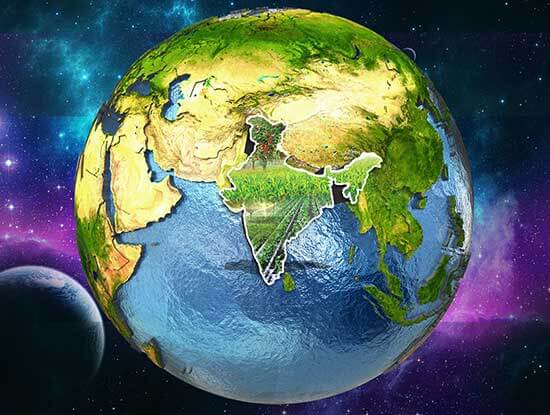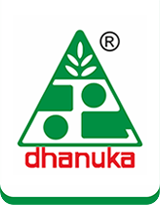


Crops

crops

Soybean
Soybean is recognized as one of the premier crops around the world. It’s a major source of vegetable oil, protein and animal feed. Due to high protein content (>40%) and high oil content (>20%), Soybean is considered to be an important food commodity.The Soya Protein is called complete protein because it supplies sufficient amount of amino acids. Soybean oil contains no cholesterol. The acreage under this crop has doubled in past two decades to around 27 million acres currently being sown under this crop, with better returns encouraging more farmers to adopt this crop.Madhya Pradesh, Maharashtra, Rajasthan and Andhra Pradesh are the major cultivators of this important oilseed, with their respective contributions.
Soybean Farming with Dhanuka
Soybean Farming: your ultimate resource for everything related to cultivating soybeans. At Dhanuka, our mission is to help you excel in soybean farming by providing expert guidance, insights, and valuable tips.
Why Choose Soybean Farming?
Soybeans, scientifically known as Glycine max, aren't just another crop; they're a vital cornerstone of modern agriculture. Renowned for their versatility, they serve as a rich source of protein and oil for both human and animal consumption. The global demand for soy-based products continues to rise, making soybean farming a lucrative endeavor for farmers.
Our Pledge to Your Success
We understand that soybean farming comes with unique challenges, and we're here to support you every step of the way. Our commitment is to empower farmers like you with the knowledge and tools necessary to achieve the highest yields and maximize profitability, all while promoting sustainable and environmentally responsible practices.
What You Need to Know!
Dhanuka is your gateway to a treasure trove of information and resources. Here's a glimpse of what awaits you:
Soybean Varieties: Explore a diverse array of soybean varieties customized for various climates and farming conditions. Learn which variety aligns best with your goals and resources.
Planting and Care: Dive into comprehensive guidance on planting soybeans, managing your crop throughout its growth stages, and optimizing soil health and irrigation practices.
Fertilization Strategies: Gain insights into the nutritional requirements of soybeans and discover how to create a personalized fertilization plan that promotes robust growth and high yields.
Pest and Disease Management: Acquire the skills to identify, prevent, and combat common soybean pests and diseases using effective integrated pest management techniques.
Market Insights: Stay informed about the latest trends in the soybean market, including global market conditions, trade policies, and sustainable farming opportunities.
Your Trusted Partner in Soybean Farming Success
At Dhanuka, we're not just a supplier; we're your steadfast ally in the field. Our unwavering dedication to research, sustainable practices, and farmer education sets us apart. We're here to help you navigate the complexities of soybean farming, whether you're a seasoned pro or just beginning your journey.
Our ultimate goal is to empower you to achieve exceptional yields, increased profitability, and a positive impact on the environment. Your success is our success.
Embark on Your Soybean Farming Journey Today
Are you ready to unlock the full potential of your soybean farm? We invite you to explore our comprehensive resources, peruse our product offerings, and let Dhanuka be your trusted guide on the path to a thriving soybean farming venture.
Together, we can redefine soybean farming for a sustainable and prosperous future.

Paddy
Paddy(Oryza sativa) cultivation is the most important agricultural operation in the country, not only in terms of food security but also in terms of livelihood. It plays a major part in the diet,economy, employment, culture and history of India.India is one of the world's largest producers of rice and brown rice, accounting for 20% of all world rice production, It grows in almost all states in India (West bengal, Uttar pradesh,Punjab, Haryana, Andhra Pradesh,Tamilnadu & Chhattisgarh are the major states). It is a tropical plant, it flourishes comfortably in hot and humid climate. It is mainly grown in rain fed areas that receive heavy annual rainfall. That is why it is fundamentally a kharif crop in India. It is also grown through irrigation in those areas that receives comparatively less rainfall.

Cotton
India has emerged as the largest producer of raw cotton in the world and also occupies the first position in terms of total area under crop production. Cotton is one of the most important fiber and cash crop of India and plays a dominant role in the industrial and agricultural economy of the country. It provides the basic raw material (cotton fibre) to cotton textile industry. Cotton in India provides direct livelihood to millions of farmers and people are employed in cotton trade and its processing.

Sugarcane
Sugarcane (Saccharum officinarum L.) is the main sources of sugar in India and holds a prominent position as a cash crop. India is the world’s largest consumer and the second largest producer of sugar. Nearly 11 crore people are directly or indirectly dependent on the sugar industry in the country. Sugarcane is one of the important commercial crops of India. It is one of the most important food-cum-cash crop grown in the country, providing employment to a larger number of people, in addition to earning considerable foreign exchange. Sugarcane represents a source for 75-80% of worldwide sugar production, with the majority of the rest being taken by sugar beet that is more suited to grow in Europe.

Potato
The potato is a starchy, tuberous crop from the Solanaceae family. It is the world’s fourth-largest food crop and an important crop for India with India being the 2nd highest producer of Potato in the world. It is one of the few crops where India’s average production is higher than the world average at around 20 MT per Hectare.

Chilli
Chilli is one of the most important commercial crop grown in India. India is the major producer, consumer and exporter of chilli in the world. The major chilli growing states in India are Andhra Pradesh, Karnataka, Maharashtra, Tamil Nadu, Bihar and U.P. these states accounts for nearly 80% area under chilli cultivation in India. Chilli can be grown in all types of soil from light sandy to heavy soils. Chilli is very sensitive to water logging. Chilli is growing under both irrigated and rainfed condition. Even though its a rainfed crop, farmers consider this as one of the commercial crop.

Brinjal
Brinjal is an important vegetable crop of subtropics and tropic with nutritional and ayurvedic medicinal value. In India, it is cultivated in almost all states. Its varieties display a wide range of fruit shapes and colours, ranging from oval or egg shaped to long club-shaped. The fruits contain low in calories and fats, mostly water, some protein, fibre and carbohydrates. It is with ayurvedic medicinal property, useful to diabetic patients and also excellent remedy for liver complaints.

Onion
Onion (Allium cepa L.), also known as the bulb onion or common onion, is a vegetable that is the most widely cultivated species of the genus Allium.India is the second largest onion growing country in the world. Indian onions are famous for their pungency and are available round the year.It is hardy a cool-season biennial but usually grown as annual crop. Onion has narrow, hollow leaves and a base which enlarges to form a bulb. The bulb can be white, yellow or red and require 80 to 150 days to reach harvest.Onion is a temperate crop but can be grown under a wide range of climatic conditions such as temperate, tropical and subtropical climate.

Tomato
Tomato is botanicaly known as Lycopersicum esculentum belongs to the family Solanacae.It is an important commercial vegetable crop of India & it is a herbaceous sprawling plant growing to 1-3 m in height with weak woody stem. Tomato is a warm season crop, it requires warm and cool climate. The plants cannot withstand frost and high humidity.Tomato is one of the most important vegetables because of its special nutritive value. It contains Protien, Fibre, suger, Fat, Carbohydrate, Vitamins and Minerals. It is one of the most versatile vegetable with wide usage in Indian culinary tradition. Tomatoes are used for soup, salad, pickles, ketchup, puree, sauces and in many other ways It is also used as a salad vegetable. Tomato has very few competitors in the value addition chain of processing.

Okra
Okra(Abelmoschus esculentus), also known as lady fingers in English & Bhindi in Hindi is a commercial vegetable crop belongs to family Malvaceae. It originates from Ethiopia and is widely spread all over tropical, subtropical and warm temperate regions of the world.It requires long warm growing season during its growing period .It growns best within a temrature range of 22-35 C.Andhra pradesh, West bengal, Odisha, Bihar, Gujarat, Jharkhand, Chhattisgarh, Maharastra and Assam are the Major States comes under the Okra production. It plays an important role in the human diet and is a good source of protein, carbohydrates, vitamins, calcium, potassium, enzymes and minerals.

Cabbage & Cauliflower
Cole crops are one of the largest groups of temperate vegetables, comprising important crops like cauliflower (Brassica oleracea var. botrytis), cabbage (B. oleracea var. capitata), sprouting broccoli or broccoli (B. oleracea var. italica).The cruciferous vegetables, often called “Cole” crops, are grown for their leaves. These are cool-season crops; they tolerate light freezes and even brief heavy freezes, but prolonged deep freezes are fatal. Though naturally biennials, they are grown as annuals.Cabbage and broccoli are used raw in salads. Cabbage is used steamed or boiled alone, or in a mixture of other vegetables as main dishes.

Wheat
Wheat (Triticum aestivum L.) is the second most important cereal crop of India next to Rice. It is one of the major food grains of the country and a staple food of India. It is rich in proteins, vitamins and carbohydrates and provides balanced food. India is the fourth largest producer of wheat in the world after Russia,USA and China and accounts for 8.7 per cent of the world’s total production of wheat. It usually sown from the month of September to December in various states of India (Madhya Pradesh, Uttar Pradesh, Punjab, Haryana, Maharashtra, Bihar, Andhra Pradesh, Karnataka, Rajasthan, West Bengal).

Tea
Tea is an aromatic beverage commonly prepared by pouring hot or boiling water over cured leaves of the Camellia sinensis, an evergreen shrub (bush) native to East Asia. Use of tea as a beverage commenced towards the close of the sixth century. During the two succeeding centuries tea gained enormous popularity. After water, it is currently the most widely consumed drink in the world.

Grapes
Grape (Vitis sp.) belonging to Family Vitaceae is important commercial fruit crops grown on a large variety of soil. It is a temperate crop which has got adapted to sub-tropical climate of peninsular India. Maharashtra occupies majority of the total area under grape cultivation in the country. In India 75% of the produced grape is available for table purpose, nearly 22% is dried for raisin production and 1.5% is used for wine making and 0.5% for juice making. Maharashtra is considered as the grape belt of the country.

Cucurbits
Cucurbits are an important group of vegetables belong to family Cucurbitaceae, grown extensively throughout India and other tropical and subtropical regions of the world. Most of the cucurbits are annuals, direct sown and propagated through seed. However, pointed gourd, Ivy gourd and chow-chow, the perennials, are propagated vegetatively. The family Cucurbitaceae consists of about 118 genera and 825 species. India is blessed with a rich diversity of cucurbits and is believed to be the primary and secondary centers of origin of many of the gourds and melon. Gourds, melons, squashesand cucumber are the main groups of crops under the family Cucurbitaceae. These vegetables are well known for their nutritional and medicinal values, and as potential sources of crop diversity. Cucurbits are consumed in various forms i.e., salad (cucumber, gherkins, longmelon),sweet (ash gourd, pointed gourd), pickles (gherkins), desserts (melons) and culinary purpose.Some of them (e.g., bitter gourd) are well known for their unique medicinal properties.Watermelon is the world's most widely cultivated cucurbit followed by cucumber, melons, squashes and pumpkin.

Basmati
In the Indian subcontinent Basmati (Paddy) is a variety of long, slender-grained aromatic rice which is traditionally from the Indian subcontinent.India is the largest producer of Basmati in the world & as of 2014, India exported 65% of the overseas basmati rice market. In India Basmati Rice mainly grows in J & K, Himanchal Pradesh, Punjab, Haryana, Delhi, uttarakhand and western Uttar Pradesh. Optimum climatic requirements for normal growth of Basmati are 20 - 35°C temperature throughout the crop duration, clear sky during day, low night temperatures and equitable distribution of rainfall.

Maize
Maize popularly known as “corn” is one of the most versatile emerging cash crops having wider adaptability under varied climatic conditions. It is called queen of cereals globally. In India, maize or corn is the third most important food cash crops after wheat & rice. Maize is grown throughout the year in all states of the country for various purposes including fodder for animals, food grain, sweet corn, baby corn, green cobs, and pop corn. Corn flour is consumed widely in Indian cooking. Maize or corn serves as a basic raw material to thousands of industrial products that may include oil, starch, alcoholic beverages, pharmaceutical, food sweeteners, food cereals, cosmetic, film, gum, textile, package and paper industries.

Groundnut
Groundnut belongs to family Leguminosae (Fabaceae) sub-family Papilionoideae. Five states namely Andhra Pradesh, Gujarat, Karnataka, Rajasthan and Tamil Nadu account for about 80% of the total groundnut area and production of the country. Gujarat alone contributes about 35% of the total production of groundnut. Groundnut is a typical crop which requires a long warm growing season while water logging, drought and cold weathers are extremely detrimental to its growth.Soils that are well drained, light coloured, loose, fertile, sandy loam, rich in calcium and moderate organic matter with pH ranging from 5.0 to 8.5 is ideal for groundnut cultivation










